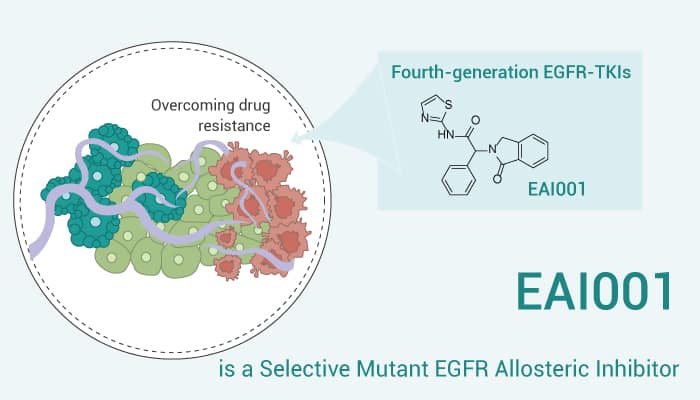Epidermal growth factor receptor (EGFR) belongs to the ErbB family of receptor tyrosine kinases (RTKs). Specifically, EGFR belongs to a receptor family, which contains three additional proteins, namely ErbB-2, ErbB-3, and ErbB-4. These proteins and EGF family growth factors form a comprehensive system. Besides, EGFR participates in cell growth control through its role in the mitogen-activated protein kinase (MAPK) pathway. The molecular feature of the EGFR signaling pathway is the activation of MAPK/ERK, PI3K/Akt, and JAK/STAT pathways. Moreover, the EGFR signaling pathway is one of the most important pathways to stimulate the growth, proliferation, and survival of epidermal cells.
Furthermore, EGFR is relevant to the pathogenesis and progression of different cancer types. Meanwhile, EGFR and EGF-like peptides are often overexpressed in human cancers. Nonetheless, there is the amplification of the EGFR gene and mutation of the EGFR tyrosine kinase domain in cancer. The activation of the EGFR signaling pathway is related to the regulation of a variety of cellular responses, including cell proliferation, inflammatory process, and extracellular matrix regulation. Importantly, overexpression or mutation of EGFR may be responsible for the constitutive activation of pathways controlled by these receptors. Here, we will introduce a selective mutant EGFR allosteric inhibitor, EAI001.
EAI001 is a Selective Mutant EGFR Allosteric Inhibitor.

First of all, EAI001 is a potent, selective mutant EGFR allosteric inhibitor with an IC50 value of 24 nM for EGFRL858R/T790M. EAI001 has the potential for research on cancer.
In the second place, EAI001 with 50 μM binds to EGFR T790M/C797S/V948R. Interestingly, EGFR T790M/C797S/V948R lies deep inside the EGFR towards the ATP binding site and C-helix. Additionally, EAI001 showed inhibitory activity due to hydrophobic interaction with amino acids Ile759, Leu747, Leu788, Leu777, and Met766.
All in all, EAI001 is a potent, selective mutant EGFR allosteric inhibitor.
References:
Maity S, et, al. Pharmacol Rep. 2020 Aug;72(4):799-813.